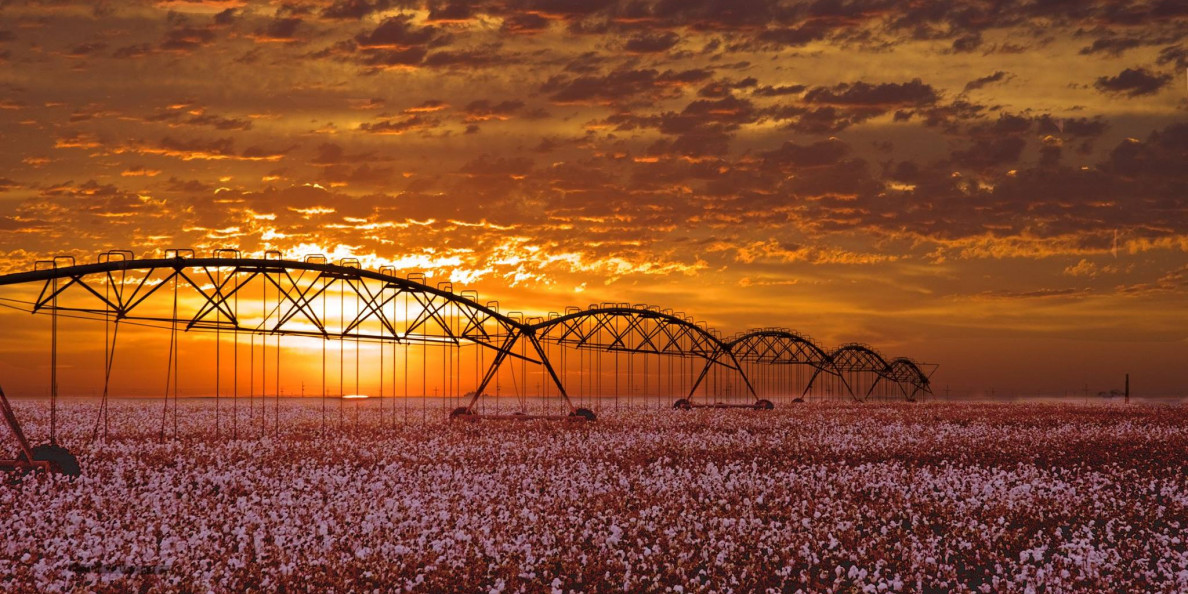Seven weeks after Hurricane Harvey tore across the Texas Coastal Bend, farmers and residents may not be back to normal, but they have made “amazing progress,” to clean up and begin to plan for the 2018 crop year.
Josh McGinty, assistant professor and Extension specialist at the Corpus Christi Research and Extension Center, says some areas are “still ugly,” but folks are doing a good job of cleaning up. “Everything looks better. Right after the storm, as people began cleaning up, it looked worse for a while. Debris was piled up all over.”
As workers removed those piles of limbs, bits and pieces of houses and other structures, and trash, the area began to look better, McGinty says. “We can still tell a hurricane came through here. We will be able to tell that for a long time, but the cleanup has made a difference.”
The worst hit areas, around Rockport and Refugio have worked through massive piles of debris, McGinty says. “A lot of power lines were down and that’s not a problem in most places now. We’re still seeing some mess but it is being cleaned up. Some recovery will be slow.”
All but one of the area’s cotton gins are up and running, he adds. “Only the gin at Bayside remains down. I think they had some 30,000 bales on the gin yard, but most of those have been moved to other gins. Some modules were too badly damaged to gin.”
He says the amount of cotton lost to the storm appears to be less than initial estimates, about 200,000 bales.
Most fields that were flooded will require minimal tillage and reworking to get back into shape for spring planting. “Some have already put their fields up for the winter.”
SOIL FERTILITY ISSUES
Fields that held standing water for several days, however, may have some problems. “These fields probably lost nitrates,” McGinty says. “Soil testing will be important this fall to find out what’s left. Also, soils inundated with runoff water could show other problems. We don’t know where a lot of that runoff came from or what was in it. That’s another reason to run a soil test.”
Corn and grain sorghum fields that were harvested before the storm suffered some debris pileups from the old crop residue. McGinty says masses of rotting vegetative matter accumulated at row ends, ditches and roadsides. “Most of that has now been burned off,” he says.
Salinity should not be an issue. Storm surge was not a significant problem in agricultural lands, he says. “A few areas near a wildlife refuge may have had salt water, but not much, and we don’t expect significant problems in farm fields.
“But most farmers will start off with a clean slate for the next crop and will need to soil test to know what they have available.”
He says most farmers he works with in the Coastal Bend will survive the storm’s aftermath and make another crop. “Most will come out OK. I don’t think we will see as many farms with a total loss as we initially expected. The area has changed a lot in seven weeks. A lot of progress has been made.”
Bayside Richardson Gin manager David Wyatt said work at the gin has continued. “We will not gin this year,” he says, “but we have not slowed down. We’re putting on a roof now and are waiting on delivery of some metal materials.”
Wyatt says the round bales that were on the gin yard when Harvey hit have all been moved to other gins. “The conventional modules were insured out. The tarps just blew away and the modules were torn apart.” He says the high winds took one-fourth of some modules and three-fourths of others, “depending on how they were oriented to the wind.”
MORE ROUND BALE HARVESTERS
Wyatt thinks the hurricane may convince more growers to switch to round bales next year. “We knew before that the round, wrapped bales provided more protection.”
Insuring conventional modules could be difficult, too, he adds. He expects insurance for those rectangular, tarped modules will be more expensive, “if they can get them insured.”
He adds that he will not be able to absorb additional expenses to handle conventional modules.
“Producers are finding that the round bales are not really more expensive. Payments (for the on-board balers) are higher, but they save on labor and they need less equipment.”
Some farmers have said they eliminate two or three tractors, and the module builder, plus the labor needed to operate them.
Wyatt expects the gin to be operational in plenty of time for the 2018 ginning season. “We had rather be ready early than to get a late start,” he says.
He echoes the sentiments of a lot of farmers and ag industry support groups—suppliers, manufacturers, university and association folk—who spent little time bemoaning the bad luck that brought the devastating storm to their area, but as soon as the winds died down and the water receded began to clean up, rebuild and plan for the next crop.


